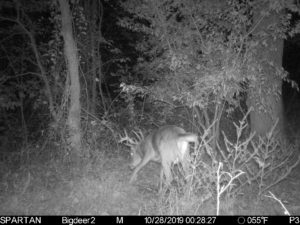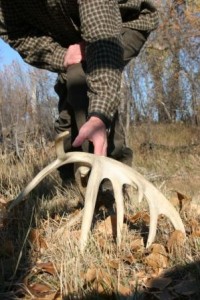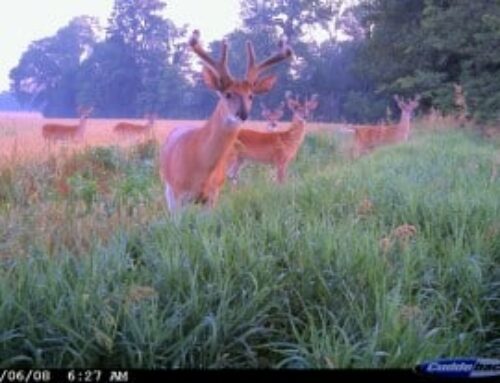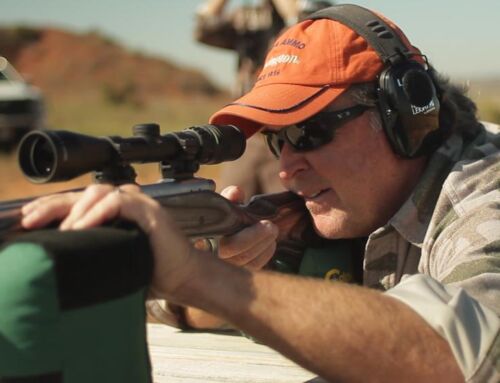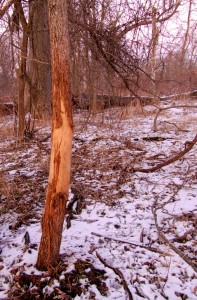 A study of wild, hunted deer in Louisiana found that the average core area of mature bucks in the fall and winter months is only about 300 acres. Much smaller than most hunters imagine. It’s like that in many areas of the East and Midwest. Although big deer venture out of these comfort zones on excursions for does each November, they come home after the rut and spend most of their days back in the same small areas. If food and cover remain the same, bucks will live in these cores year after year, and all their lives.
A study of wild, hunted deer in Louisiana found that the average core area of mature bucks in the fall and winter months is only about 300 acres. Much smaller than most hunters imagine. It’s like that in many areas of the East and Midwest. Although big deer venture out of these comfort zones on excursions for does each November, they come home after the rut and spend most of their days back in the same small areas. If food and cover remain the same, bucks will live in these cores year after year, and all their lives.
Now is the best time to find and explore those core areas.
Take a look around as you drive to work. The grass and weeds are brown and beaten down, and the fields and woods are as barren and open as they will ever be. The next couple of weeks are the best time to scout your land and find old sign that reveals the home ranges and patterns of your deer.
Start walking and cover every ridge, draw and creek bottom. Stick your boots and nose in every field edge, thicket or swamp. You’ll bump a few deer, but who cares? You won’t be back to hunt them for 5 or 6 months. Here’s what to look for.
DEER TRAILS
Cut a main deer trail, wide and muddy now in late winter, and follow it…walk, walk and walk to find out where it comes and goes. That trail might fork into secondary trails that link more food sources and cover thickets. Walk those too. Mark the trails on an old-school aerial map or on an app like onX Hunt.
As you hike, note secondary feeding areas you might have missed—a grove of white oaks on a ridge, a honeysuckle patch near a swamp… When a trail cuts a creek, veers around a ridge point or cuts through a saddle, take note. Those funneling points are great places for tree stands next fall.
RUBS/SCRAPES
Last fall’s buck rubs and even scrapes are easy to spot in the barren woods. Look for “signpost” rubs–large, scarred trees that mark a buck’s core area. Top whitetail scientist Grant Woods points out that while only mature bucks blaze the big rubs, all deer interact with them. “They smell and touch them,” says Woods. “They act as communal pheromone wicks and are located in areas with high deer traffic.”
Woods has found a correlation between the number of rubs and the number of older, shooter bucks in an area. On one of his management projects, he’s observed 5,000 rubs per square mile, or 7.8 per acre. If you find a piece of woods lit up rubs like that, start looking for trees for your stands this fall.
Studies old and new reveal that bucks are habitual, and scrape in the same areas year after year. Key in on 3 scrape spots you might run across and mark them on your map:
–A cluster of large scrapes at the intersection of 2 or 3 trails, with big rubs nearby. This is a “rut junction” and a good spot for a stand.
–A line of large scrapes on the edge of a linear honeysuckle thicket or row of pines or cedars. Bucks run these edges frequently.
–A heavily scraped section of a hardwood ridge 100 yards or so off a corn or bean field. If acorns are thick this fall, bucks will stage and scrape like mad there again. Look for a stand spot now.
SHED ANTLERS
As you hike/scout you should also hunt for sheds, of course. Say this weekend you run across a 60-inch, 4-point antler glinting in the sun. That’s a tangible piece of evidence. You know that a 140-class buck survived last season (figure 60 inches for the other side, and an 18-inch spread).That buck will hang in that core area—remember maybe only 300-400 acres–many days next season, so plan to hunt him right there.
Some shed-hunting tips:
- Look in and around food sources. Alfalfa and clover are good places to find drops.
- Soybean or corn stubble with some green grass and weeds sprouting up are honey-holes; deer will feed there and some bucks will drop antlers.
- From any food source, branch out toward staging and bedding areas. Thick, scrubby fields (think good rabbit hunting) and sunny grass strips are good spots to find antlers.
- Whitetails are habitual and creatures of habit. If you find several sheds in one area this March, you’ll likely find more antlers there next year.

